The ISIS Front End Test Stand (FETS for short) sits hidden behind concrete blocks close to the Particle Physics Department of the Rutherford Appleton Laboratory.
FETS was designed and built as a prototype for a future high-power proton facility, which could come about in the form of an ISIS upgrade, a Neutrino factory or a Muon Collider (- ISIS being a Neutron and Muon Source that produces beams that allow scientists to study materials at the atomic level). Designed as a driver for future accelerators, FETS is set to enable 4MW beam power, making it quite a step up from the current most powerful comparable accelerator which runs at 1MW and a huge leap from the one currently used at ISIS which runs at 180kW.
The main part of FETS is a 4m long Radio Frequency Quadrupole (RFQ), an accelerating structure which both accelerates and focuses the beam. This particular RFQ focuses, efficiently bunches and accelerates the beam from 65 keV to 3 MeV. Since the beam is non-relativistic at these energies, the proton velocity changes rapidly with energy and it is difficult to match the structure of a normal RF cavity to this change. Also, the continuous stream of protons from the ion source needs to be bunched so that you don't lose a significant proportion of them when passing them through the alternating fields of the subsequent cavities; this is done by the RFQ.
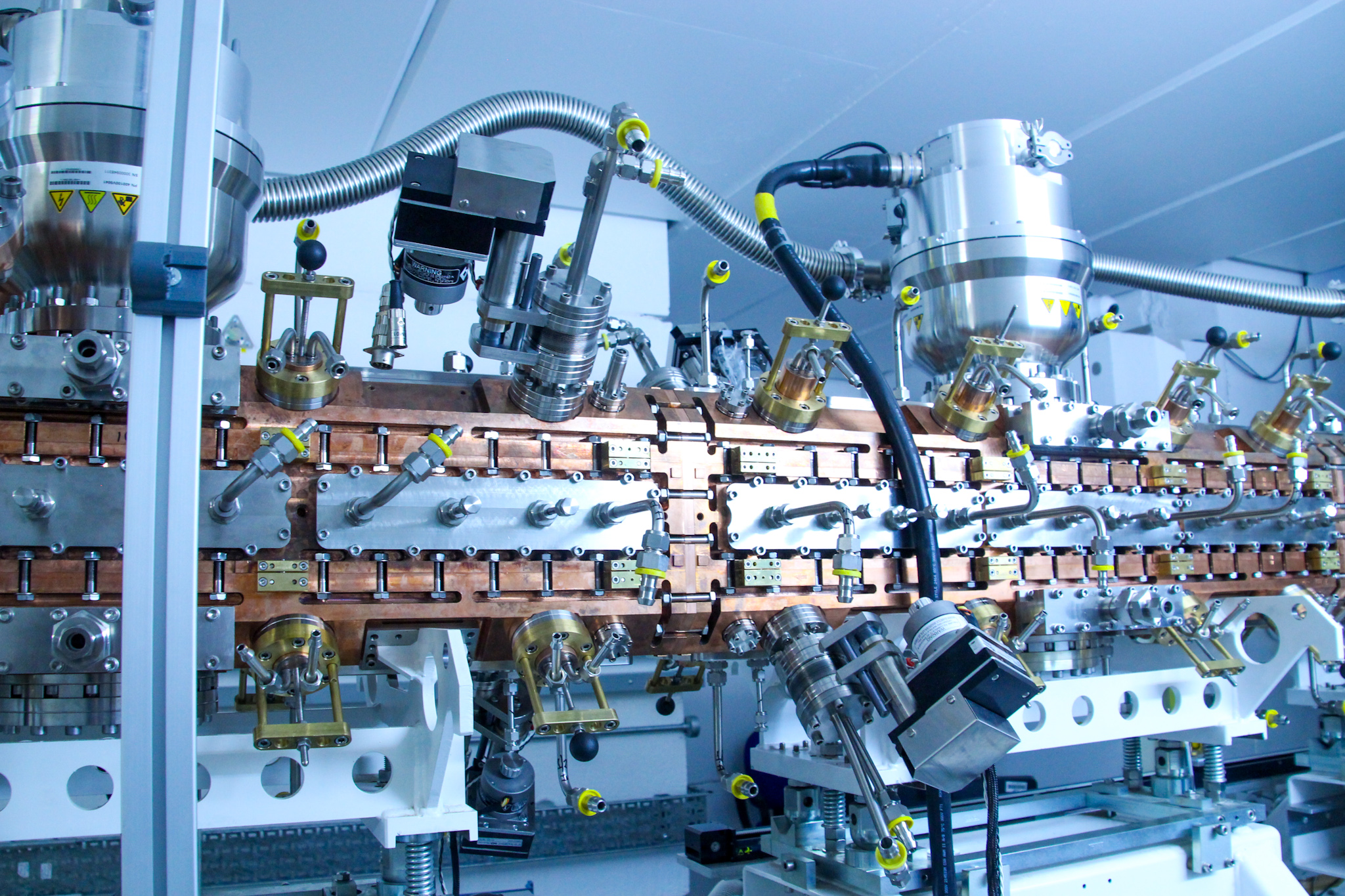
If protons are lost then the power of the beam decreases; and it is important to get as much power stored in the beam as possible in order to produce more neutrons (or muons). For a beam at a fixed energy a higher current (more protons) will give a beam of greater power (P = I*V; where V is accelerating voltage and I is beam current); the effective bunching and focusing of the protons, helps to provide a higher current beam.
Effective bunching is important not only so that protons are not lost and power reduced, but also in regards to what the protons that are lost do. As the field in the RF cavities alternates sinusoidally the protons need to arrive at the right time, in a bunch, or they will be lost. When protons are lost from the accelerator, they can have nuclear reactions in the materials that they pass through. These reactions can produce radioactive isotopes, which subsequently produce radiation when they decay. This is known as activation.
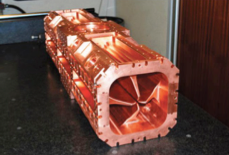
This particular RFQ is made up of four sections simply bolted together, rather than the standard vacuum brazing technique (a form of welding). This is unique and if successful the technique could be much more widely used. It of course presents a new set of challenges, which are being worked on, and so far things are looking promising.
Because of how complex the structure of the RFQ is, it needs "tuning" to make sure it is resonating at the correct frequency (324 MHz) and that the accelerating field is the same throughout (i.e. "flat" ). This is done using tuners. There are 62 tuners in the RFQ, 16 placed in each of the 4 quadrants - except for two of the places are taken for RF (radio frequency) power input. The tuning is being done by the University of Huddersfield and the particle physics department (PPD) at STFC in collaboration with colleagues from ISIS. Rob Edgecock from PPD and Wanisa Promdee, a PhD student from Huddersfield, have taken on the task of tuning the RFQ by using a bead pull technique. The very literally named technique involves passing a bead through the structure that modifies the local resonance frequency and the modification depends on the local field strength. You can then work out the flatness of the field by measuring the frequency as a function of length. A novel iterative algorithm is then used to work out the tuner positions.
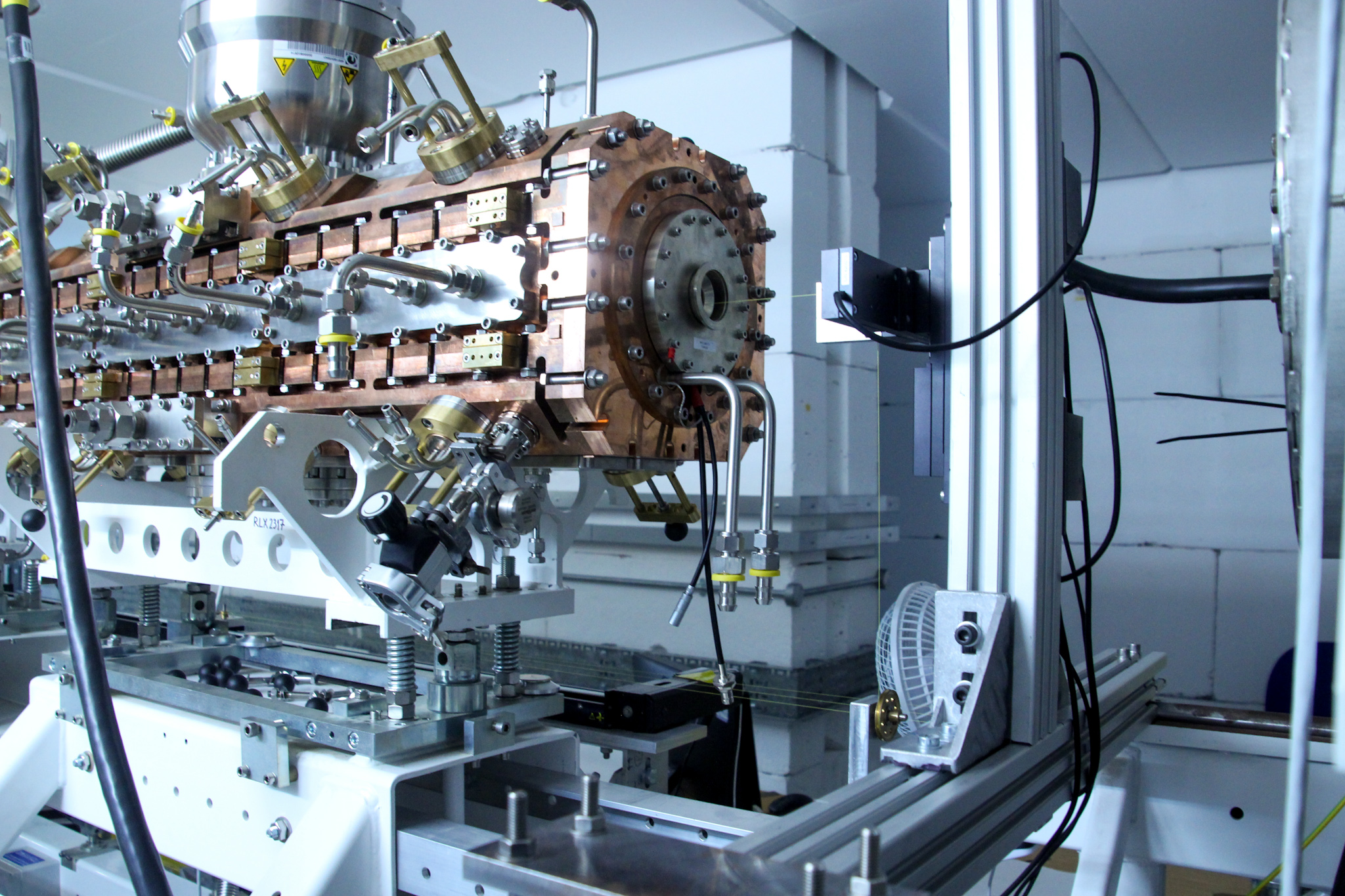
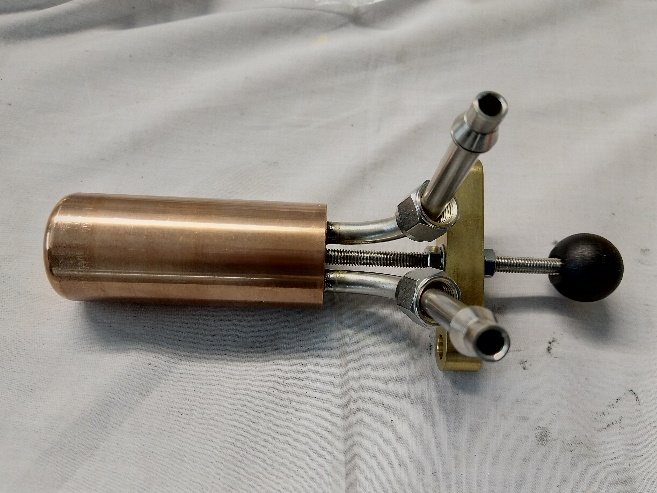
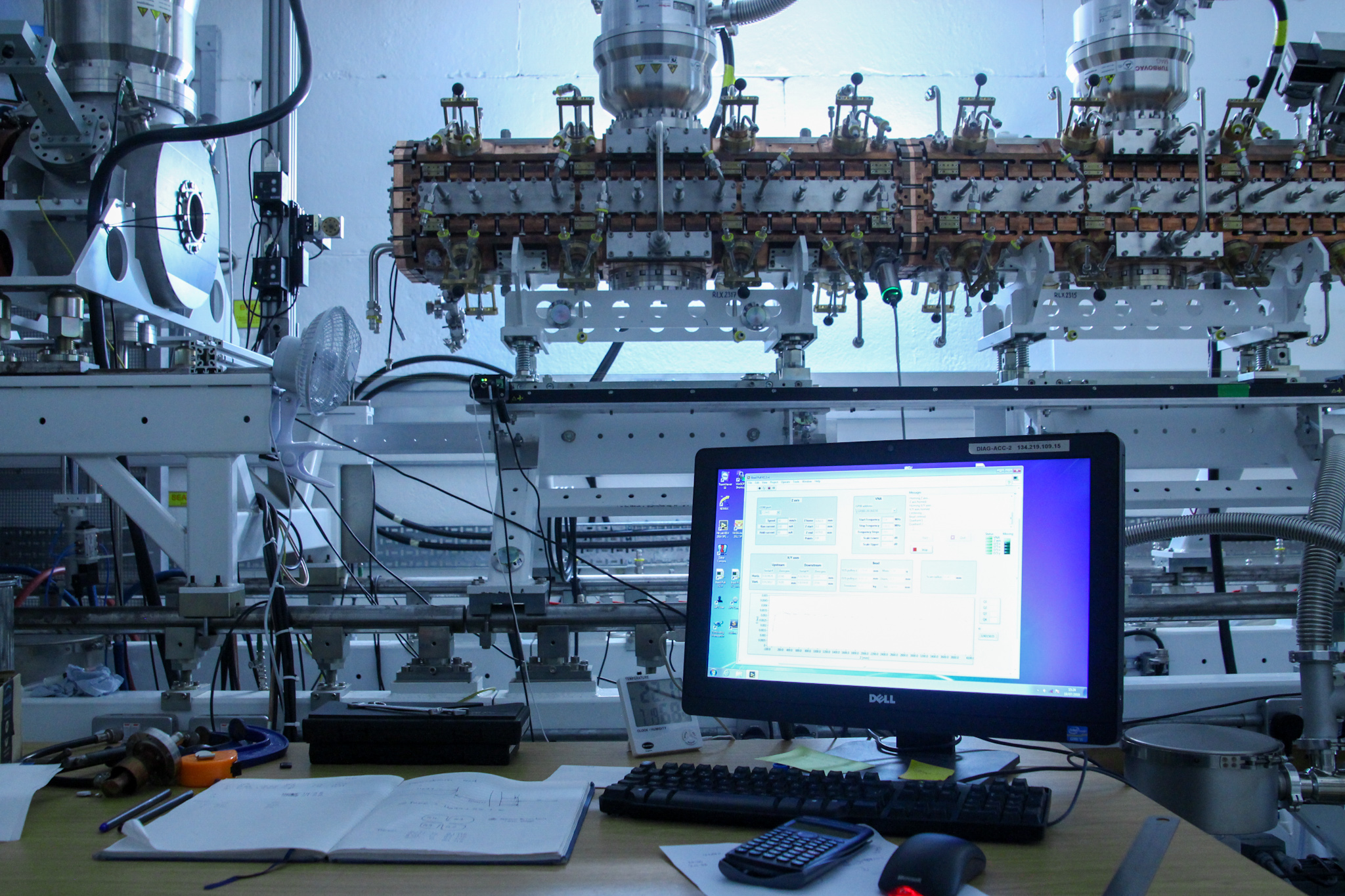
After several weeks of fixing code and adjusting hardware, the tuning process is now working. Remaining variations in how flat the field is seen to become exclusively from slight variations in the surface of the wheel used as part of the pulley system in the bead pull technique. Once complete, the next steps will be to deliver full power to the RFQ and start accelerating a beam!
This work has been a very successful collaboration with the University of Huddersfield and our colleagues over at ISIS.
From L-R: Alan Letchford (project leader), Mike Dudman (project manager), Rob Edgecock and Wanissa Promdee (University of Huddersfield)
